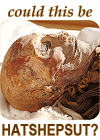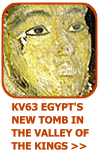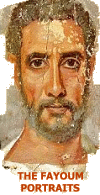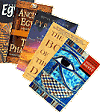|
|
|

[ Peasant Farmers ] [ Craftsmen ] [ Scribes ] [ Priests ] [ Return to Life in Ancient Egypt ]
The priests
Ancient Egyptian priests were known as "hem-netjer" (servants of the god) and were essentially officials who were employed at the temple to look after the daily needs of the cult statue. Priests were not necessarily religious, some inherited the post from their father, in certain circumstances, priestly offices could even be purchased. There were groups of priests who had specialist knowledge, others who taught writing and copied out texts, and others who attended to the economic organisation of the temple. Temples were the residences of the gods, but the enclosure could also include workshops, libraries, and estates. As such, priests in Ancient Egypt had a different role to a modern day priest.
The different roles of the priests
Hem-Netjer
servant of god |
The "Hem-Netjer" prepared and carried forward offerings to the god and assisted at ceremonies and processions. They had access to the sanctuary where the divine image was kept, and controlled the entrance to the temple.
|
Hem-Netjer Tepey
high priest |
The position of "Hem-Netjer Tepey" or "overseer" was used at cult centres where there were a large number of hem-netjer (servants of god). They would often work on their land or tend to their jobs in the state administration when they weren't doing their temple service. Generally this role was performed by high ranking individuals, often the sons or sons-in-law of the pharaoh, and on occasions even the viziers. |
Wa'eb
pure one |
The "Wa'eb" would assist the hem-netjer by carrying out lesser tasks in the maintainance of the temple and its rituals. He assured the purity of the ceremonial rooms, the people, instruments and tools. A basic but important role, all priests would have been trained as a wa'eb, and as such, could always act as a wa'eb if necessary. |
Kheri-Heb
lector priest |
The "Kheri-Heb" would recite, sing or chant rites directly from the sacred books at ceremonies and processions. They also recited formulae and prayers to appeal to the gods, and functioned as oracles for people who sought out advice of the deities. Distinguished by a broad band worn diagonally across their chests, several kheri-heb could be based at each greater temple, taking turns to perform their functions. |
| Sem priest |
The "Sem" priests performed the elaborate rituals at mummifications and burials. They are particularly associated with the "opening of the mouth" ritual, and are shown distinctively dressed in a panther or leopard skin. |
Ritual and respect in the temple
|
Before the priest could enter the innermost sanctuary where the god resided, he had to purify himself by performing a series of rituals. There is evidence that in the New Kingdom and thereafter, priests would shave their entire bodies, and they cleansed with natron. They also abstained from certain foods, although this did not involve ritual fasting. They were permitted to wear only garments of linen, and white papyrus sandals. The higher ranks were favoured with special robes such as the leopardskins worn by the Sem priests (see right).
When the priest was ready to enter the temple, he would wash himself in water, rinsing away dirt and sweat and bestowing energy and rejuvenation upon himself. He would also rinse his mouth with a natron and water mixture.
|
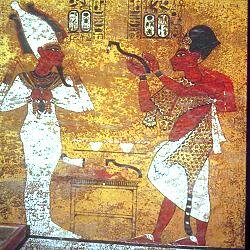 |
|
A sem priest, dressed in his distinctive leopard skin and holiding the ritual adze, performs the "opening of the mouth" ceremony on Tutankhamun's mummy.
|
As the morning sun appeared first over the horizon, the priests would intone the dawn hymn that began "Awake in peace, great god" (with the name of the specific god being mentioned). The most senior priest approached the sanctuary within the dimly lit temple, and would break the door seal, opening the sanctuary door. A ritual prayer would be spoken four times over the image of the god, giving the god back his soul so that he could reassert his physical earthly shape.
The god's image was cleansed, rubbed with oil, and purified. The deity's old garments were then removed, and incense burned to cleanse and purify the sanctuary. The image was redressed in colourful new linen garments, could have perfumes and cosmetics applied to its face, and could even be adorned with jewels.
 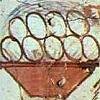 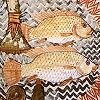 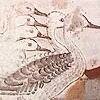 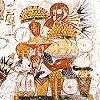
The breakfast meal was then laid out before the shrine and the god. There was bread, joints of meat, roasted fowl, baskets of fruit and vegetables and jars of beer and wine. All the offerings were prepared in the temple kitchens, using produce from the temple estates. When animals were prepared for their meat, no blood was spilt on the god’s altar, nor was the animal slaughtered in the sight of the god.
|
Once the god had had its fill, the food was removed, perhaps first to be placed before the shrines of lesser deities, and then returned to the kitchens to be distributed as wages to the temple personnel. The image and the entire sanctuary was then sprinkled with water, five grains of natron and resin were placed on the floor, and more incense wafted. The doors of the sanctuary were then closed and resealed.
These rituals were performed three times, morning, noon and dusk, though the latter two were briefer. After the evening meal, the god’s vestments were removed before the cult statue was returned to the shrine and the Evening Hymn was recited.
|
|
The regular feast days celebrated within the temple included First of the Month festivals and the New Moon festivals. On these days, the cult statue may have been paraded around the temple precincts, pausing for offerings to be made at places designated. At other temple rites, the statue would not move outside the innermost rooms. People could come to the outermost courts of the temple to seek the god’s help and advice. During major festivals such as the Opet festival at Karnak, the god’s image was taken outside of the temple enclosure in an elaborate procession. At times such as these, the people could even come forth and seek the god’s advice in the form of an oracle. |
Priestly family life
Priests normally married, had children, and enjoyed family life. During the New Kingdom, priests served in four phyles, each working for one month in three. For eight months they carried on their normal profession or business, whether political, administrative or commercial, then came into the temple. Before entering a temple for their service, they had to abstain from sexual contact.
A power hungry priesthood
The priestly class of society grew continually, playing an increasing role in the economy and in government as the dynasties went by. During the New Kingdom it was the High Priest of Amun at Thebes who exercised supreme authority and was chosen for this role by the king himself. However by the end of the 20th Dynasty, the High Priests of Amun had became so powerful they rivalled the position of pharaoh himself. It is believed that the escalating power of the priesthood at this time was one of the fundamental reasons why the so called "heretic" pharaoh Akhenaten, adopted his new monothestic religion, elevating "Aten" the sun-disc as the supreme and only god.
Discover the leisure activities of the Ancient Egyptians >>
|
|
|





